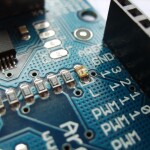In this guide, we will walk you through the process of gracefully stopping your Arduino program, ensuring that your projects run smoothly.
Why Stopping an Arduino Program Matters
Before we dive into the specifics, let's understand why it's essential to know how to stop an Arduino program effectively.
1. Preventing Hardware Damage
Sudden power interruptions or abrupt halts in the program can damage your hardware components, such as sensors and actuators. Properly stopping the program helps avoid such damage.
2. Debugging and Troubleshooting
Stopping the program allows you to analyze its behavior, identify errors, and make necessary adjustments. It's a crucial step in debugging your Arduino projects.
3. Adding User Control
In some cases, you may want to give users the ability to stop or pause your Arduino program manually, adding an interactive element to your project.
How to Stop an Arduino Program
Now, let's get into the nitty-gritty of stopping your Arduino program.
1. Using the noLoop() Function
In your Arduino sketch, you can use the noLoop() function to stop the program from continuously looping. This is particularly useful when you want to halt the program's execution under specific conditions.
void setup() {
// Your setup code here
}
void loop() {
// Your main program loop
}
void stopProgram() {
noLoop(); // Stop the program's loop
}
2. Using Conditional Statements
You can implement conditional statements within your loop to control when the program should stop. For example, you can use an `if` statement to check a certain condition and then stop the program accordingly.
void setup() {
// Your setup code here
}
void loop() {
if (someCondition) {
noLoop(); // Stop the program
}
// Continue program execution
}
3. Adding User Input
To give users the ability to stop the program manually, you can use input devices like buttons or switches. When the user activates the input device, the program can be halted.
void setup() {
pinMode(buttonPin, INPUT);
// Your setup code here
}
void loop() {
if (digitalRead(buttonPin) == HIGH) {
noLoop(); // Stop the program when the button is pressed
}
// Continue program execution
}
4. Using Interrupts
Interrupts can be employed to stop the program in response to external events. For instance, you can set up an interrupt to stop the program when a specific sensor detects a particular condition.
void setup() {
attachInterrupt(digitalPinToInterrupt(sensorPin), stopProgram, CHANGE);
// Your setup code here
}
void loop() {
// Continue program execution
}
void stopProgram() {
noLoop(); // Stop the program when the sensor condition changes
}
Stopping an Arduino program is a vital skill for any Arduino enthusiast. It helps protect your hardware, aids in debugging, and adds versatility to your projects by allowing user interaction. Whether you choose to use functions, conditional statements, user input, or interrupts, mastering the art of halting your Arduino program will undoubtedly enhance your project development.
Frequently Asked Questions (FAQs)
1. Can I stop an Arduino program without physically disconnecting the board?
Yes, you can stop an Arduino program using software techniques like the noLoop() function or conditional statements without disconnecting the board.
2. Is it safe to abruptly unplug the Arduino board to stop a program?
No, abruptly unplugging the board can lead to hardware damage. It's always best to use software-based methods to stop the program gracefully.
3. Can I resume a stopped Arduino program?
Yes, you can resume a stopped program by using the appropriate function or condition to restart the loop.
4. What if I want to pause the program temporarily and then resume it?
You can implement a pause and resume feature in your program by using flags or conditional statements to control program execution.
5. Are there any precautions I should take when stopping an Arduino program?
Ensure that all critical processes are properly shut down to avoid unexpected behavior when stopping the program.



![How to Track a Scammer on WhatsApp [5 Easy Steps]](http://res.cloudinary.com/dycxivucc/image/upload/v1/general/track-scammers-on-whatsapp-150x150.jpeg)





